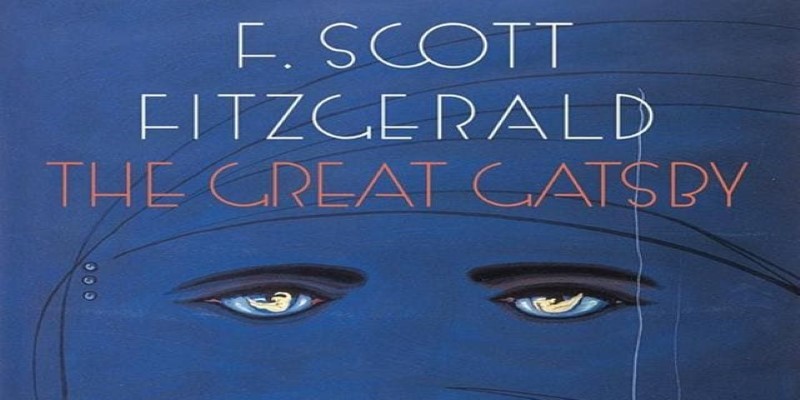"The Great Gatsby" by F. Scott Fitzgerald is a classic American novel that has left an indelible mark on literature. Let's dive into its captivating story, explore its publication history, unravel major themes and characters, and glance at its adaptations.
Let’s delve into the intricate plot of "The Great Gatsby" by F. Scott Fitzgerald.
Nick's Arrival and Gatsby's Extravagance: The story starts as Nick Carraway moves to Long Island in the summer of 1922. He lives in a simple house beside Jay Gatsby's fancy mansion. Gatsby is a rich and mysterious person who throws big parties every weekend. Through Nick's eyes, readers witness the opulence and excesses of the Roaring Twenties.
Gatsby's Unrequited Love for Daisy: As Nick becomes acquainted with his cousin Daisy Buchanan and her husband Tom, he learns about Gatsby's enigmatic past. Gatsby, it turns out, is deeply in love with Daisy, and their history is marked by a romance cut short by World War I. Gatsby's extravagant parties attempt to attract Daisy's attention and win her back.
Daisy and Gatsby's Rekindled Affair: As the narrative unfolds, Gatsby arranges for Nick to invite Daisy to his house, leading to the rekindling of their affair. The two engage in a passionate relationship, and Gatsby's hopes for a future with Daisy intensify. However, Daisy is torn between Gatsby and the security Tom provides, and the tension builds.
Tragedy Unfolds: The tension culminates in a heated confrontation between Gatsby and Tom. Tragedy strikes when Gatsby takes the blame for a car accident that Daisy is involved in, protecting her from the consequences. Meanwhile, Tom and Daisy distance themselves from Gatsby, and his once-thriving social life unravels.
Gatsby's Tragic End: The novel takes a tragic turn when George Wilson, the husband of Tom's mistress, learns that Gatsby's car was involved in the accident. Consumed by grief and manipulated by Tom, Wilson seeks revenge. In a pivotal moment, he shoots Gatsby and then takes his own life.
Nick's Reflection and Gatsby's Funeral: The novel concludes with Nick's disillusionment with the wealthy and morally corrupt society he has been a part of. He organizes a small funeral for Gatsby, attended only by a few, highlighting the superficiality and lack of genuine connection in the characters' lives.
The Green Light and the Final Revelation: Throughout the novel, Gatsby is seen gazing at a green light across the bay, symbolic of his unattainable dreams. The final revelation of the truth about Gatsby's past and his genuine love for Daisy adds a layer of poignancy to the story, emphasizing the theme of the American Dream's elusive nature.
"The Great Gatsby" was first published in 1925. Despite receiving critical acclaim later, it initially faced mixed reviews and achieved only moderate commercial success. However, its reputation soared over the years, and it is now considered one of the greatest American novels. The novel has been through numerous printings and has become a staple in high school and college literature courses.

As we explore the profound layers of "The Great Gatsby," we delve into its major themes and characters, unraveling the intricate tapestry that defines this literary masterpiece.
The American Dream: The novel critically examines the American Dream, portraying the hollowness and illusions that wealth can bring. Gatsby's relentless pursuit of success and love reflects the disillusionment with the idea of achieving happiness through materialism.
Wealth and Class: The story unfolds during the lively 1920s, exploring the extravagances of the Jazz Age. It explores the stark divide between the newly rich and the old aristocracy, questioning the morality of the social elite.
Love and Obsession: Gatsby's love for Daisy drives the narrative, showcasing the destructive power of obsessive love. The novel explores the consequences of holding onto past relationships and the impact of unattainable dreams.
Moral Decay: Fitzgerald paints a picture of a society in moral decline. The characters' actions reveal a world where decadence and superficiality prevail, eroding ethical values.
Jay Gatsby: Jay Gatsby, the enigmatic host of extravagant parties, is the novel's central figure. His wealth and mysterious background mask an unrequited love for Daisy Buchanan, embodying the elusive pursuit of the American Dream.
Daisy Buchanan: Charming and elegant, Daisy Buchanan symbolizes beauty and wealth. Her choices and actions drive the novel's plot, reflecting the moral ambiguities of the Jazz Age society.
Nick Carraway: As the narrator and an outsider, Nick Carraway provides a lens into the lives of those around him. His reflections offer insights into the complexities of the characters and the societal decay depicted in the novel.
Tom Buchanan: Daisy's wealthy and arrogant husband, Tom Buchanan, represents the old aristocracy. His callousness and moral decay embody the societal challenges explored in the narrative.
Jordan Baker: Professional golfer Jordan Baker's cool demeanor and lack of moral scruples complicate the social dynamics. Her character reflects the superficiality and dishonesty prevalent in the novel's world.
Myrtle Wilson: As Tom Buchanan's mistress, Myrtle Wilson symbolizes the consequences of pursuing the American Dream without moral constraints. Her affair becomes a catalyst for the unfolding tragedy.
Meyer Wolfsheim: The shadowy figure with connections to organized crime, Meyer Wolfsheim adds an element of mystery and danger to Gatsby's character. His presence highlights the darker aspects of the Jazz Age society.
Top of Form
"The Great Gatsby" has been adapted into various forms of media, including film, theater, and even ballet. One of the most notable film adaptations is the 1974 version starring Robert Redford as Gatsby and Mia Farrow as Daisy. Baz Luhrmann's 2013 adaptation, featuring Leonardo DiCaprio and Carey Mulligan, brought a visually stunning and modern take to the classic tale.
These adaptations have introduced the story to new audiences, each interpretation offering a unique perspective on the timeless themes explored in Fitzgerald's novel.

"The Great Gatsby" remains a poignant exploration of the American Dream, wealth, and the complexities of human relationships. Its enduring popularity and cultural impact testify to its relevance in understanding the human condition and the societal challenges that persist over time. Whether captivated by the tragic love story or intrigued by the societal critique, Fitzgerald's masterpiece continues to resonate with readers worldwide.

By Lucy Lee/Apr 25, 2024

By Frederica/Dec 09, 2024

By Susan Kelly/Apr 21, 2024

By Frederica/Mar 12, 2024

By Lucy Lee/Feb 28, 2024

By Triston Martin/May 09, 2024

By Eleanor/Feb 12, 2024

By Lucy Lee/Feb 27, 2024

By Mark Allen/Mar 06, 2024

By Eleanor/Apr 19, 2024

By Eleanor/Jan 13, 2025

By Triston Martin/Feb 14, 2024